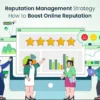Today in this competitive business world providing customer service has become essential, because not only does it ensure customer satisfaction, but also builds customer loyalty and builds a positive brand image. And therefore, almost all top brands today all over the world are wanting to excel in their customer service.
As per a report by “The Institute of Customer Service”, 58% of customers are not willing to buy from a brand or store because it lacks in providing good customer service. And 70% of them would also discourage others from shopping from those brands and stores. But what actually is great customer service?
Make customer interactions effortless and boost satisfaction❤️
Get expert tips with piHappiness now!
Is it giving your customers a compensatory gift card or flowers after they have gone through so much trouble? No!
Excellent customer service is all about ensuring that your customers put the least effort into doing business with you. And their effort is measured using one of the most important feedback metrics – the Customer Effort Score (CES).
What is a Customer Effort Score?
Customer Effort Score (CES) is a measurement of how much effort a customer takes to make an issue resolved or to get his/her request satisfied. CES is measured using CES software that encourages participants to rate their effort in doing business with your company on a scale of “Very Difficult” or “Very Easy.”
With CES surveys you can further ask your customers about the scores they have given and ask them the reason behind giving those scores. This will allow your business to identify what is leading to an increased customer effort.
Measuring CES is a perfect indicator of how frictionless your service is. If you are able to track CES over time, you can see if your improvements are making a difference or not.
How Can You Reduce Customer Effort Score?
According to Harward Business Review, 94% of clients would make repurchases from your business or your brand only if they don’t have to put in a high level of effort when working with your business.
Therefore, it is not only important to measure the Customer Effort Score but along with that you also need to improve it.
Let’s understand how we can reduce the Customer Effort Score in your company.
Easy Availability of Services
As per a Salesforce Survey, 75% of customers desire consistent experience, irrespective of how they engage with a brand or store, either through telephonic conversions, in-person communication, social media, etc.
Some customers may like to choose customer service via call while some may like to choose some other channels, such as email or webchat. The key is being open through various channels with the goal that they can contact you and look for a resolution.
This simply doesn’t mean being present on different channels; it means helping customers quickly find what they need. For example, providing the right FAQ on the support page, availability of a support executive on live chat with which customers could discuss their concerns, and being connected to a live support person, who would help solve their queries without much delay, etc.
Always make sure to map the customer’s journey and identify those points where customers frequently reach out for service. It will assist you with formulating an omnichannel support technique.
Don’t Let Customers Call Repeatedly for Single Service
According to HubSpot Research, 90% of clients rate a “prompt” reaction that is significant or vital when they have a client service question.
60% of clients characterize “immediate” as 10 minutes or less.
Therefore, first contact resolution is important in lowering customer effort.
Your customer service team must have full information such as trending complaints, recurring challenges, common solutions, etc., to be able to provide solutions to consumers without them having to wait for days and months.
The main point is to ensure that your customers do not have to call or email repeatedly for a single service challenge that they are facing with your brand.
Don’t Let Customers Repeat Their Challenges
As per the Zendesk report, 705 customers think that organizations ought to team up for their behalf so they don’t need to rehash data to various representatives.
Customers, in general, find it very frustrating if they repeatedly have to face the problem for the same challenge. Thusly, it is basic to use the right innovation that syncs all the client data, the resolution status, the last feedback, and so forth, to the customer contact or ticket, so that every time a new representative is handed over the ticket, he/she will know exactly what the customer needs.
Integration of customer satisfaction software with customer servicing and ticketing tools is a good example of this. The integration allows customer tickets and contacts to be tagged with the recent feedback so that agents can modify support communication based on feedback they receive from customers, and thus don’t have to ask them again to share their challenges.
Allow Self-Servicing
69% of consumers first try to solve issues that they are facing by themselves before reaching out to seek support. Therefore, it is important to allow customers to do self-servicing through automated chatbot technology, FAQs, knowledge library, etc.
Moreover, if you are planning to introduce a self-service chatbot, make sure the technology is easy for customers to use. And if you are planning to introduce a knowledge base, make sure that it answers all the questions that customers may have and is placed correctly for customers so that they can easily find the information.
Request for Customer Feedback
When you see that the customer experience is just beginning, you will have to be more proactive. And therefore, you should also request customer feedback directly by using surveys such as Customer Satisfaction Surveys (CSAT) survey (done with a CSAT software tool), Customer Effort Score (CES), and Net Promoter Score (NPS).
Respond to Customer’s Feedback
An issue that is quite bigger than getting negative feedback is not addressing negative feedback. Only 78% of people will be ready to do business with a brand again after a mistake is when the brand is ready to address their complaints and provide appropriate service support.
Therefore, along with collecting customer feedback, it is also important to respond to their complaints and close the feedback loop. The following are the important things you must do.
- You must respond to customers and explain to them what you have done to resolve their challenges.
- You must apologize to your customers if there is a delay in response.
- You must clearly communicate with your customers if there is an issue which you cannot resolve at the moment.
- You must compensate your customers with gifts or discount cards when you apologize for the inconvenience caused to them.
Support Your Agents by Providing Additional Training
The more a specialist tries to understand the services & products that you provide, the more he/she will be able to help your customers. The more they understand your customers’ issues, the more empathy your customers will receive.
You must also train your agents in how they should think ahead and tackle difficult situations, further, you can also train them to predict what might happen next.
Giving continuous training to your agents will help them to keep steady over what’s going on, including new processes and thoughts for making a client’s experience easy.
Lowering down customer efforts also comes with the benefit of reducing your costs. According to a Gartner study, a low-effort experience costs the company on average 37% less than a high-effort experience. For example, repeat tickets require fewer assets and more staff time.
By giving a position of low client effort, you are not only making your customers loyal but are also saving your bottom line.
Conclusion
Reducing customer effort to provide customer satisfaction is important for almost all businesses. Therefore, businesses must use customer feedback efficiently to prioritize complaints and identify feedback trends that will help them lower the overall customer effort and improve the Customer Effort Score.
By following the above-mentioned tips, you can make it easier for your customers to do business with you and reduce the amount of time they spend on customer service.






